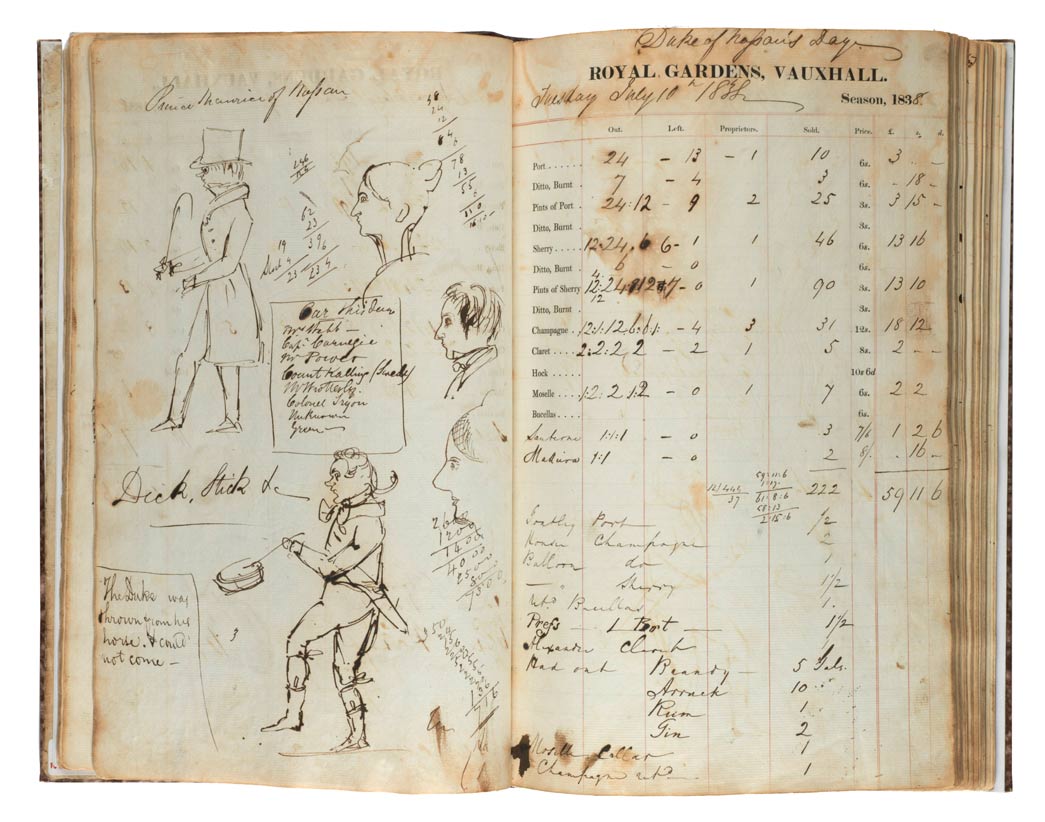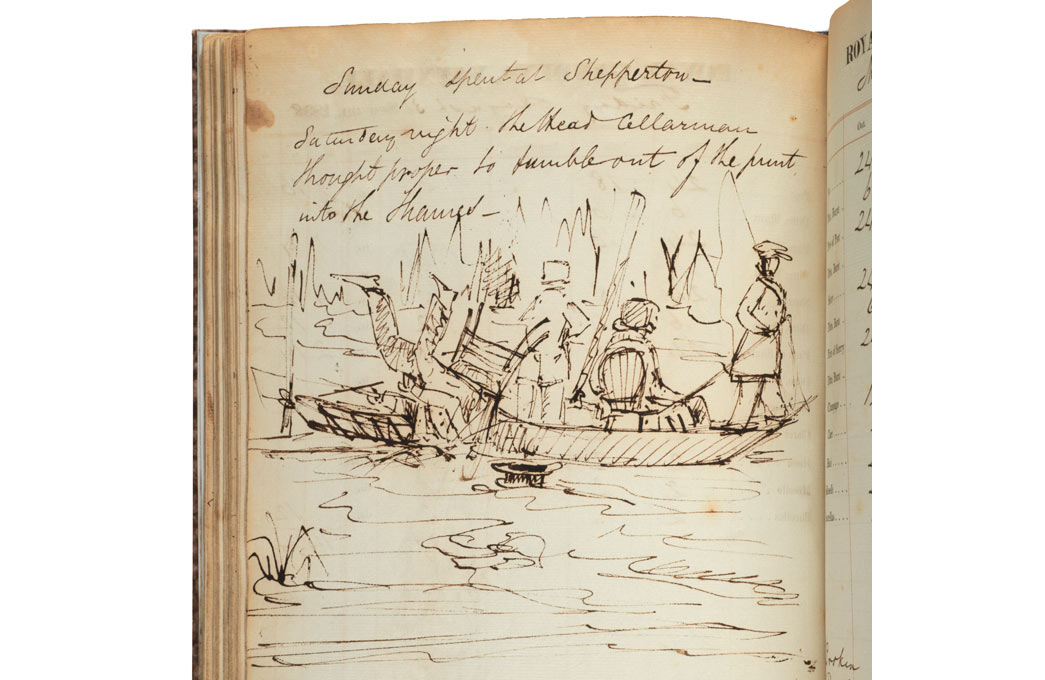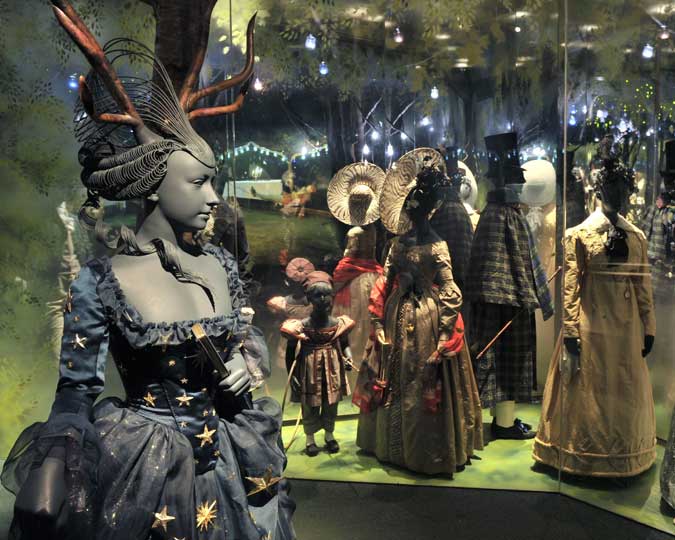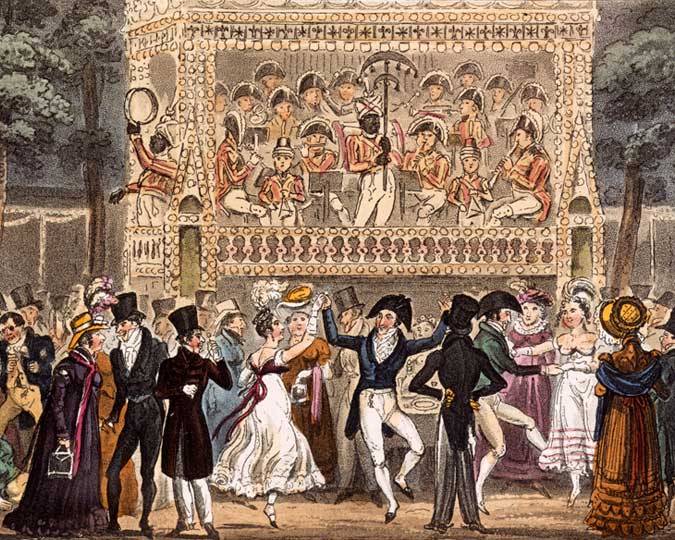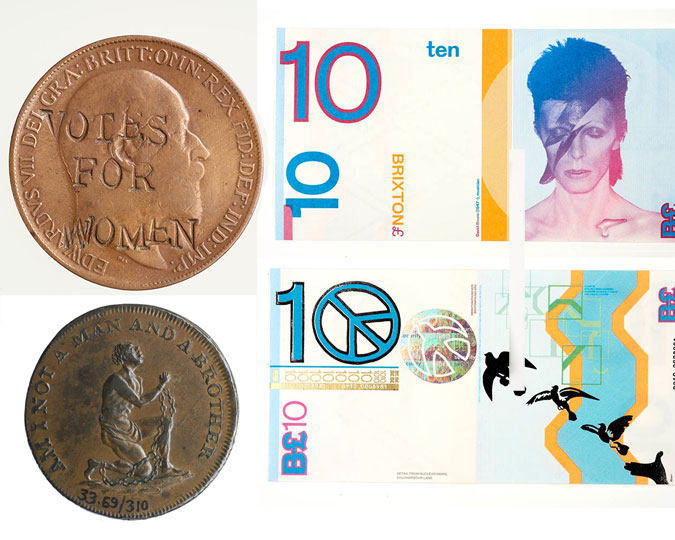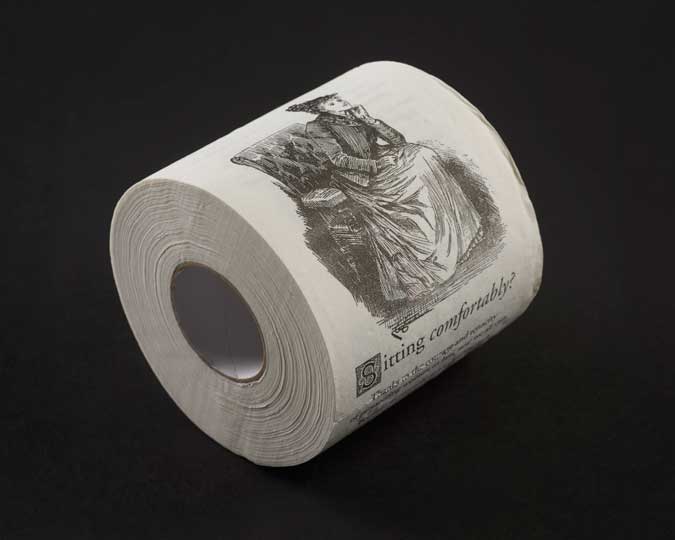An unassuming ledger from the Royal Gardens at Vauxhall contains cartoons, jokes and doodles sketched by a bored young wine-seller. These deeply personal jottings give a fascinating insight into everyday life in Victorian London.
Help us to Redress Pleasure
The Museum of London is restoring our 18th century fashion display, the Pleasure Gardens, and we need your help. Learn how you can be a fashion conservator and contribute to #RedressingPleasure.
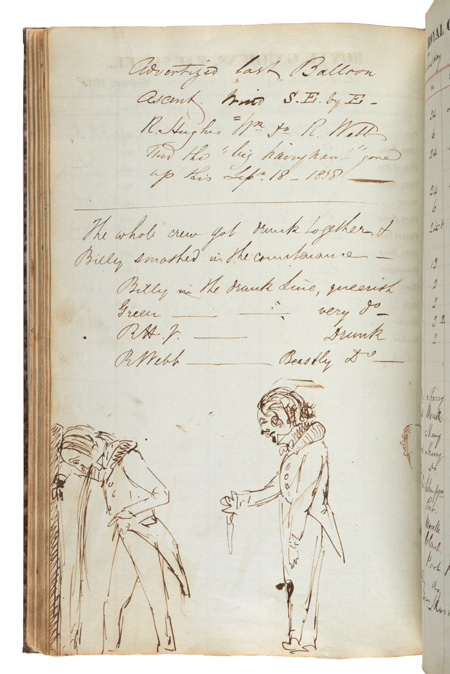
Cartoon of two drunk men
My favourite item in the Museum Library collection is this illustration, of two young men feeling very hungover in the Royal Gardens, Vauxhall. The image connects us with the human side of the past. Two young men going out on the tiles, much as we do today.
It comes from a wine account book, used to track alcohol sales in the Gardens in 1838-1839. What would, frankly, have been a fairly boring manuscript listing the sales of various types of port, sherry, champagne, claret, hock, Moselle and Bucellas, has been transformed into something joyous by the addition of contemporary doodles, comments and caricatures. These jottings, added to the blank pages facing each day’s accounts, create a wonderful window into Victorian working life in London.
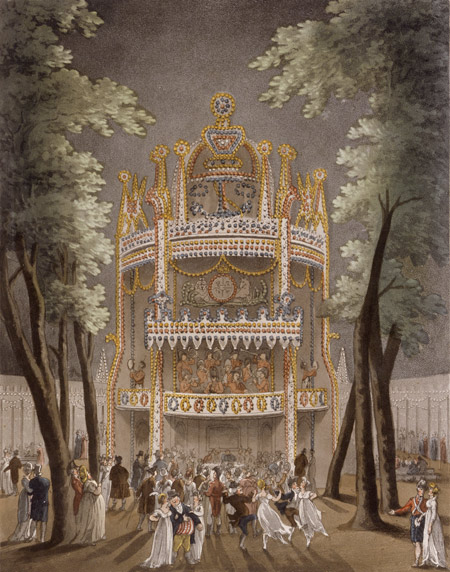
Vauxhall Gardens, 1809
Coloured aquatint, Thomas Rowlandson.
The Royal Vauxhall Gardens in Lambeth was possibly the most famous pleasure garden in 19th century London, famed for artificial illuminations. These Victorian gardens combined music, drinking, socialising and spectacular entertainments, like a combination of a modern nightclub and theme park.
However, by 1838, the date of this manuscript, Vauxhall Gardens was about to begin a decline which would lead to its closure in 1859. In 1821 Thomas Bish and Frederick Gye had bought the lease to the Gardens from Jonathan Barret. By 1825 Richard Hughes had joined the partnership and Thomas Bish had left, with the remaining pair, Gye and Hughes, continuing the management of the Gardens together until they were declared bankrupt in 1840. The wine account book therefore dates to the very end of the Gye and Hughes period, and might help to explain why the managers went bust.
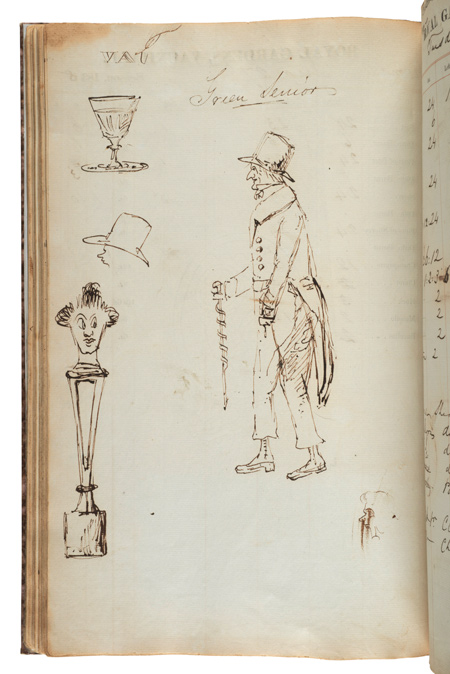
Caricature of Mr Green, Senior
Probably Charles Green, celebrated balloonist.
During this time Vauxhall Gardens was well-known for fireworks, spectacular entertainments, music and ballooning. The account book contains a number of references to the popular balloon ascents held at the Gardens, together with rough caricatures, such as this picture of ‘Mr Green, Sr’. This is probably Charles Green (1785-1870) who had started ballooning from Vauxhall in 1826. By the time of the account book both Charles Green, his son George, and his brother were engaged in balloon ascents, including balloon races.
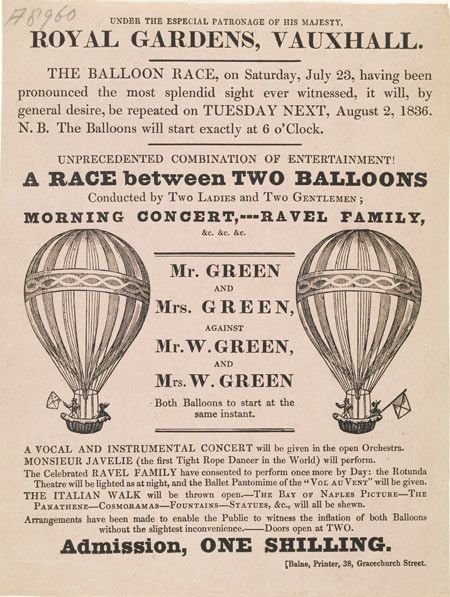
Poster for a balloon race in Royal Vauxhall Gardens, 1836
The two balloons were piloted by Mr & Mrs Green in one, & brother Mr W. Green with his wife in another. ID no. A8960
In 1836 Gye and Hughes funded the construction of Charles Green’s ‘Royal Vauxhall’ balloon. During that year it made a record-breaking journey as far as Weilburg in Nassau, Germany, and in celebration of the achievement the balloon was renamed the ‘Great Nassau’. The Great Nassau features several times in the wine account book, for example, on Monday 25th June there is a note that it was the “first day fete and first ascent of the Nassau this season, with the first inflation of the balloon by V[auxhall] Gardens gasworks”.
Several more balloon flights are noted in the ledger, including a scientific ascent made to determine how high the balloon could ascend carrying two people - one of them a "scientific man" whose caricature appears on the opposite page. The flight reached a dizzying height of 27,146 feet (8274 metres).
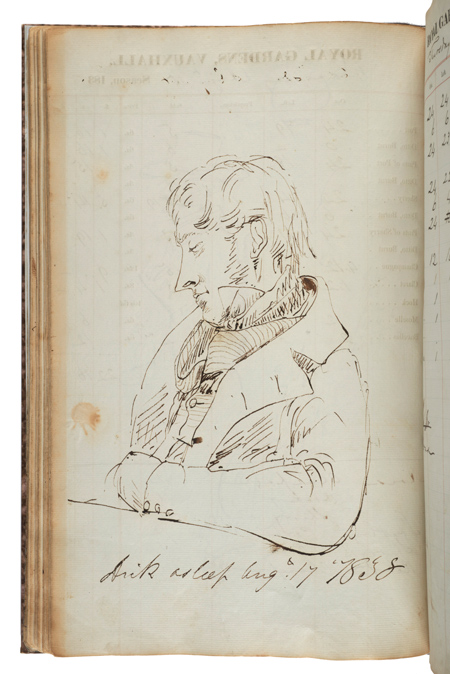
Dick asleep, Aug 17th 1838
Apart from ballooning, notes and drawings in the account book frequently mention the drinking and sleeping habits of colleagues, together with comments about unexplained absences. Such comments are usually in relation to the Head Cellarman or Dick, who may be the same person. One of the images of Dick asleep is given against the entry for Thursday 5th July and a fortnight later “Richard asleep again” has been noted. A few weeks further on, a more expansive entry tells us that “Dick dined in the Regents Park and got very drunk” and another drawing of Dick asleep is given for 17th August.
Occasionally notes on sleeping are combined with another activity, as in the entry for Tuesday 14th August which depicts the “Head Cellarman playing billiards” while the “Under Cellarman [is] fast asleep”. On 27th August a key event of note is that “Tom has his hair cut” while the “Head cellarman [has] been dining and [is] consquently, asleep” yet again. On 30 August there is a note “Nearly 12 o’clock. Head cellarman not been seen since the fireworks; supposed to be asleep”.
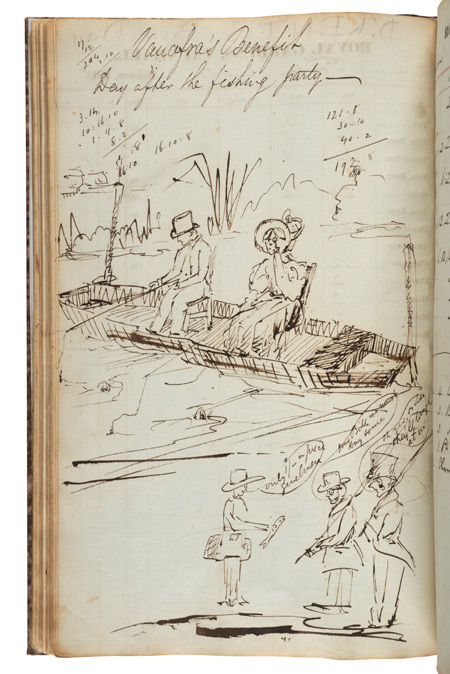
Apart from sleeping and drinking, the Vauxhall colleagues indulge in other pastimes such as fishing and shooting. A Sunday fishing party is sketched on Monday 20th August and on Monday 3rd September it is noted that the weekend was spent at Shepperton where on Saturday night the “Head Cellarman thought proper to tumble out of the punt into the Thames”. Rabbit shooting at Richmond Park is depicted against the account entry for 29th August.
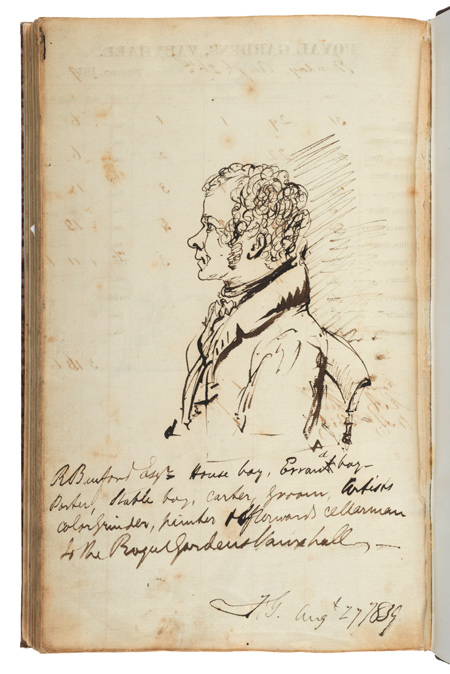
The only one of the Gardens's staff actually identified by name is one R. Banford, who is described as “House boy, errand boy, porter, stable boy, carter, groom, artist’s colour grinder, painter, & afterward cellarman at the royal Gardens Vauxhall”.
Who is the author of the ledger? There are several clues, although we will never know for certain. Firstly, in order to get away with doodling all over the account book the author must have had some authority above that of a humble employee.
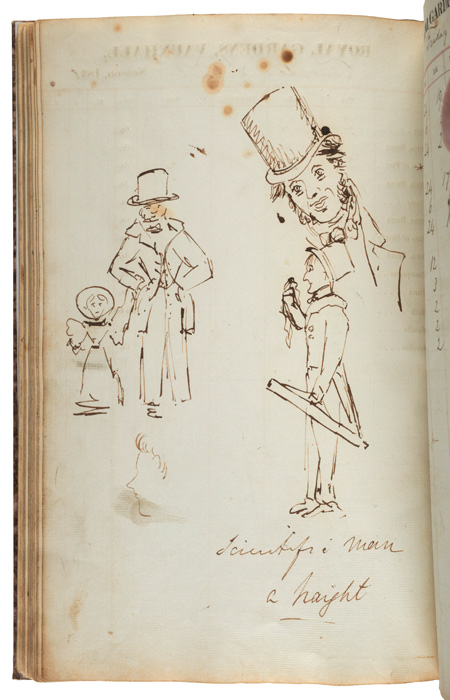
Caricatures of visitors to Vauxhall Royal Gardens
The bottom right figure is the scientific man mentioned above
Secondly, the author writes as if present on some of the balloon flights. After the flight on 25th June he notes that the balloonists were “invited by Mr Roche to Sir William Ellis’s and sat down to supper with 11 or 12 invited nobility at one of the most splendid mansions in England – the residence of Lucien Buonaparte [Napoleon's brother] during his stay in England – Denham Court.”
Likewise on 17th July the note says that “Marshall Soult came on the ground to the Balloon start and seemed to be well pleased. Descended 3 miles beyond Kelvedon… were left by our companions de voyage who appropriated our Post Chaise and were obliged to accept an invitation to sleep at the hall the seat of Lord Western who entertained us in the most hospitable manner possible.” Clearly the person who wrote this must have been more than just a junior member of staff.
The occupants of the balloon on this occasion are listed in An essay on aerial navigation, pointing out modes of directing balloons, by Joseph MacSweeny (1844) as “Messrs. Green, Power, Carnegie, Tennyson, Hughes, Gye and Parbury”.
The only identifying mark in the book is that the image of R. Banford is initialled ‘F.G. Aug 27th 1839’. As the account book was donated to the London Museum by a member of the Gye family, the finger of suspicion points to either Frederick Gye himself or, perhaps more likely, his son, Frederick.
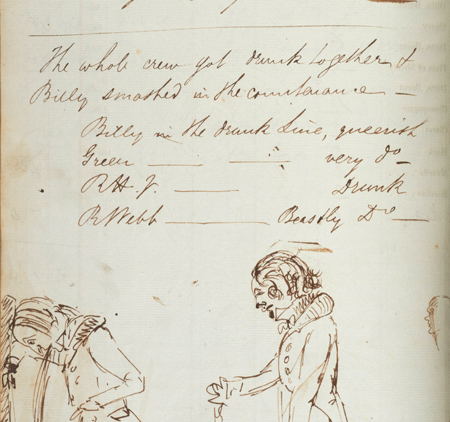
Frederick Gye the younger (1810-1878) worked for his father in Vauxhall Gardens from about 1830 to 1840, and in 1838 would have been of an age to enjoy being “smashed in the countenance” with the rest of the drunken crew. The page describes Billy (queerish), Green (very queerish), R.H.J. (drunk) and R. Webb (beastly drunk). Alternatively, if F.G. is Frederick Gye Senior, then all the depictions of Dick asleep could be of Richard Hughes, his business partner. In this case, it is hardly a surprise that the pair were declared bankrupt the following year.








